The long term goal of our group is to develop new methods to manipulate many-body states in a regime where the quantum mechanical aspects dominate their behavior and their properties. On the one hand, this should lead to new tools that allow one to probe physical laws and to measure fundamental constants with increasing precision. On the other hand, the progress of experimental methods also drives the advances in our understanding of the ever mysterious, beautiful, accurate, yet deeply dissatisfying structure of quantum mechanics. This interplay between theoretical concepts and experimental realizations promises to be very fertile in fields such as quantum control, quantum feedback and its limits, many-particle quantum systems, and many-particle entanglement (quantum computing). We use various methods, but most include laser cooled atoms (to be able to keep atoms localized, and attain long coherence time) and laser-light interaction to manipulate the atoms, the photons, or both, at the quantum level. Using internal states of atoms in combination with laser light, that has essentially zero entropy, allows us to reduce thermal noise without having to cool the atoms to very low (sub-microkelvin) temperatures.
Clock Lab
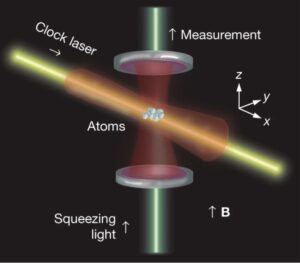
State-of-the-art atomic sensors, like optical clocks, work at the standard quantum limit (SQL) where the precision scales with the square root of the number of involved atoms. The SQL can be overcome by generating appropriate quantum correlations (i.e., entanglement) among atoms. In the Yb Clock lab, we work on techniques and protocols for engineering metrologically useful entanglement. We build a cavity quantum electrodynamics (CQED) system with ytterbium atoms. In this context, the intracavity light field mediates the atom-atom interaction required to generate entanglement. Such light-mediated interaction can be conveniently turned-off during the sensing time, a necessary feature since any unwanted interaction is detrimental to the sensors’ performance. Thanks to the high level of quantum control achieved in our system, we recently started to investigate problems at the interface of quantum information science and quantum metrology.
Sample Paper: Zeyang Li (李泽阳) et al., Improving metrology with quantum scrambling. Science 380, 1381-1384 (2023)
Graduate Students: Gustavo Velez, Matthew Radzihovsky
Group members: Edwin Pedrozo-Peñafiel, Leon Zaporski
Cesium Lab
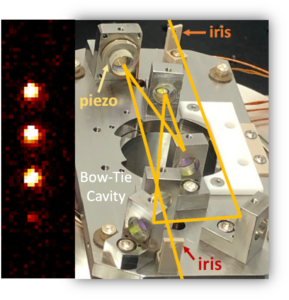
Cesium lab combines single atoms in optical tweezers with macroscopic optical cavities to study entanglement and quantum information. In contrast to generating entanglement with Rydberg-Rydberg interactions, we intend to do so with the enhanced atom-photon interaction of an optical cavity. This has the advantage of both generating long-range interactions between atoms and bypassing the finite lifetime of Rydberg states, which allow the creation of different types of entanglement limited in fidelity only by the cooperativity of our optical cavity. Our high-cooperativity bow-tie optical cavity (η > 30) inside of our vacuum chamber is coated to work with both the cesium D2 and Rydberg transitions. We are currently building our experimental apparatus and interfacing our strongly coupled bow-tie cavity with single-atom optical tweezers. Current theoretical efforts in the Cesium lab are primarily focused on developing new and efficient quantum carving protocols. These protocols aim to create various atomic entangled states with high fidelity while minimizing the number of single-qubit gates.
Graduate Students: Matthew Peters
Postdoctoral Associates: David Spierings, Guoqing Wang
Rubidium Lab
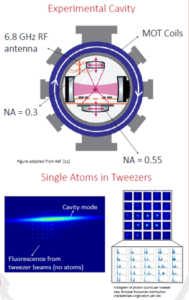
A quantum computer is a new type of computer, which operates according to the counter-intuitive rules of quantum mechanics. Many believe that someday quantum computers will allow us to solve important problems in physics, chemistry, cybersecurity, and even finance that are impossible for even the most powerful conventional computers. Before that can happen, we first have to build them. In Rb Lab, we are developing a new experimental platform for quantum computing: a programmable Rydberg atom array inside an optical cavity. We plan to use this new platform to show enhanced neutral atom readout, faster remote entanglement generation, and experimental demonstrations of quantum error correction. In the Rb lab, our ongoing theoretical research involves the investigation of Quantum Error Correction (QEC) codes capable of handling biased and erasure errors. By leveraging engineered biased Pauli noise models and erasure detection techniques, we aim to increase the QEC threshold and reduce resource overhead. This is achieved through the co-design of QEC codes and gate operations, bringing us closer to the realization of fault-tolerant quantum computing.
Graduate Students: Beili Hu, Michelle Chong, Edita Bytyqi, Gefen Baranes
Postdoctoral Associates: Josiah Sinclair
Rydberg Lab
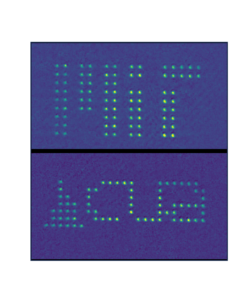
Neutral atoms are an exciting new platform for scalable quantum information science, whose interactions can be engineered via excitation to Rydberg states with high principal quantum number. However, in order to detect these Rydberg states, current state-of-the-art methods rely on ionization of the Rydberg atom, which is inherently destructive and requires further loading of replacement atoms. Additionally, fluorescence imaging of single atoms is inherently slow (~few milliseconds), compared to gate operations (~10s of microseconds), which further inhibits fast cycle times. In our lab, we use ensembles of atoms (N~100) in combination with electromagnetically-induced transparency, which enables fast readout of a Rydberg atom via the collective behaviour of many atoms. Additionally, our scheme is non-destructive of the Rydberg state, which eliminates the need for reloading and re-sorting. This opens up exciting new opportunities for single-atom logic qubits combined with atomic ensemble ancilla qubits, thereby enabling possibilities of high-fidelity entangling gates on single-atoms with fast, non-destructive readout of atomic ancillas.
Sample Paper: Wenchao Xu et al., Fast Preparation and Detection of a Rydberg Qubit Using Atomic Ensembles. Phys. Rev. Lett. 127, 050501 (2021)
Graduate Students: Tamara Sumarac, Emily Qiu, Peiran Niu
Postdoctoral Associates: Adrian Menssen (in collaboration with Dirk Englund), Shai Tsesses
Ion Lab
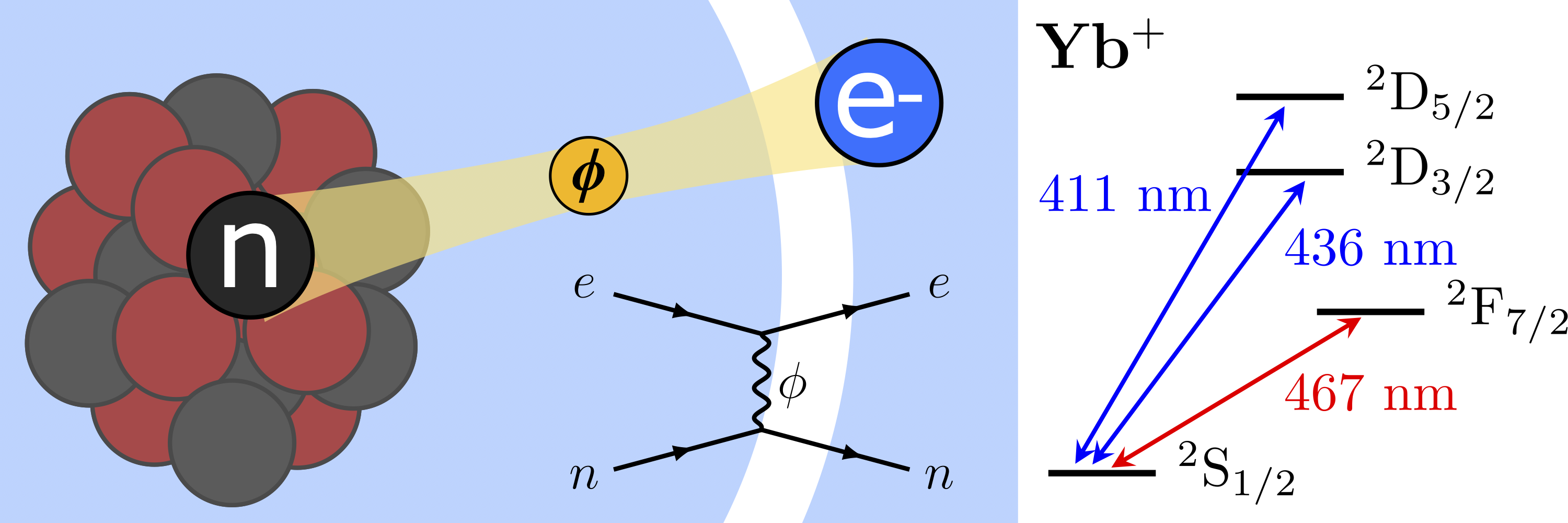
Tabletop experiments using precision optical clocks can be used to probe new physics. One such potential candidate is a fifth fundamental force that is mediated by a carrier boson. This particle may leave traces imprinted on atomic transition frequencies. Using an optical clock based on a ytterbium ion, we perform isotope shift measurements to construct King plots. Deviations from linear fits to King plots yield valuable information on the contributing sources of isotope shifts, including potential new physics. In Ion Lab, we work on co-trapping isotopes of ytterbium to extract the isotope shift using the correlation spectroscopy method. Using this data, we can put a state-of-the-art bound on this new particle’s interaction strength.
Sample Paper: J. Hur et al., Evidence of Two-Source King Plot Nonlinearity in Spectroscopic Search for New Boson. Phys. Rev. Lett. 128, 163201 (2022) https://doi.org/10.1103/PhysRevLett.128.163201
Graduate students: Eugene Knyazev, Nojun Park